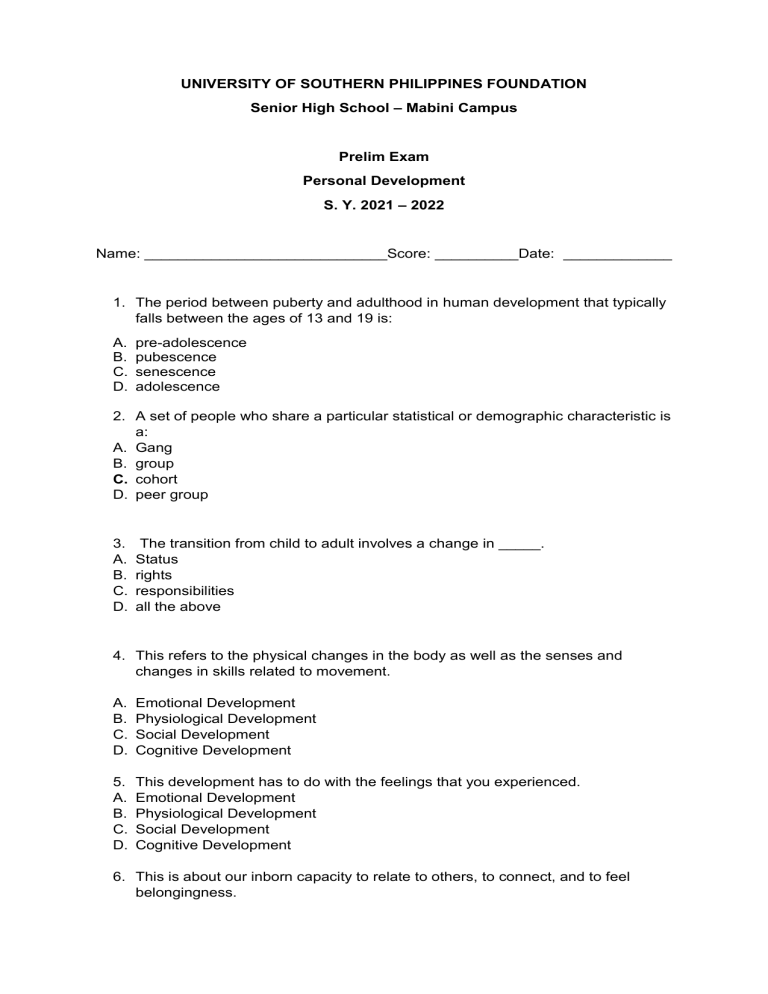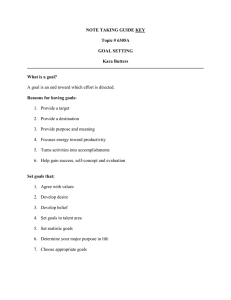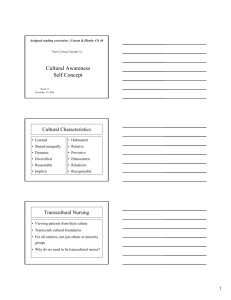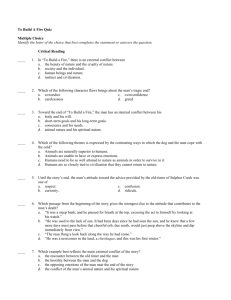
UNIVERSITY OF SOUTHERN PHILIPPINES FOUNDATION Senior High School – Mabini Campus Prelim Exam Personal Development S. Y. 2021 – 2022 Name: _____________________________Score: __________Date: _____________ 1. The period between puberty and adulthood in human development that typically falls between the ages of 13 and 19 is: A. B. C. D. pre-adolescence pubescence senescence adolescence 2. A set of people who share a particular statistical or demographic characteristic is a: A. Gang B. group C. cohort D. peer group 3. A. B. C. D. The transition from child to adult involves a change in _____. Status rights responsibilities all the above 4. This refers to the physical changes in the body as well as the senses and changes in skills related to movement. A. B. C. D. Emotional Development Physiological Development Social Development Cognitive Development 5. A. B. C. D. This development has to do with the feelings that you experienced. Emotional Development Physiological Development Social Development Cognitive Development 6. This is about our inborn capacity to relate to others, to connect, and to feel belongingness. A. B. C. D. Emotional Development Physiological Development Social Development Cognitive Development 7. This refers to a person’s intellectual abilities as shown in his/her thoughts, attitudes, beliefs, and values. A. B. C. D. Emotional Development Physiological Development Social Development Cognitive Development 8. This is defined as discovering oneself beyond the ego known as the soul, spirit, or the “inner essence” that is often disregarded or taken for granted. A. B. C. D. Emotional Development Physiological Development Cognitive Development Spiritual Development 9. Which of the following is NOT TRUE about holism? A. B. C. D. "the whole is more than the sum of its parts" often contrasted with reductionism emphasizes the presence of emergent properties suggests that the best way to understand the whole is to dissemble the individual parts 10. This refers to how one perceives or thinks about a situation. A. B. C. D. E. thoughts feelings emotions attitude behavior 11. This often stems from what one thinks about a situation. A. thoughts B. feelings C. emotions D. attitude 12. This refers to how one acts out of his attitude. A. B. C. D. thoughts emotions attitude behavior 13. This refers to what and how one thinks and feels about other people or situations. A. B. C. D. thoughts feelings emotions attitude 14. This refers to reflex-like physical responses to one's thoughts and feelings. A. B. C. D. thoughts feelings emotions attitude 15. The conscious process of thinking about your self-identity is called _____. A. Introversion B. Introspection C. Extraversion D. Changing roles 16. Which statement about self-identity change is INCORRECT? A. Self-identity does not change significantly throughout the lifespan. B. Roles can change - from student to lawyer, for example. C. Self-esteem can increase or decrease. D. We can actively engage in introspection and discover new things about ourselves. 17. Which of the following roles is part of a person's social identity? A. Political affiliations B. Gender roles C. Religious roles D. All the answers are correct. 18. Which of the following is a part of self-identity? A. Social identity B. Self-esteem C. Roles D. All the answers are correct. 19. Which component of self identity is related to how we evaluate our own general worth? A. Self-esteem B. Introspection C. Social identity D. All the answers are correct. 20. Jessica dislikes it when people are not treated fairly. As Jessica knows this about herself, it is part of her _____. A. self-concept B. belief system C. personality D. self-understanding 21. According to Erikson's Psychosocial Stages of Development, the stage in which a child needs to learn important academic skills and compare favorably with peers in school to achieve competence is the ____ stage. A. Trust vs. Mistrust B. Identity vs. Role Confusion C. Initiative vs. Guilt D. Industry vs. Inferiority 22. Anne and James have one child and want to adopt a second. Since their first child's infancy had been extremely difficult on Mary, she was excited at the possibility of adopting an older child, perhaps a well-behaved, toilet-trained 3 year-old, and skipping the infancy period entirely. Fred, on the other hand, had serious misgivings not knowing about the quality of care giving and relationships in this child's early life. In a 3 year-old's case, he felt that inadequate care and improper resolution of what Ericksonian stage could lead to irreparable damage in later development? A. B. C. D. Intimacy vs. Isolation Identity vs. Role Confusion Trust vs. Mistrust Autonomy vs. Shame and Doubt 23. A 38-year-old woman quits her high-paying marketing job to focus on her children and become a school counselor. What stage would Erikson consider this to be: A. B. C. D. Identify vs. Role Confusion Generativity vs. Stagnation Ego Integrity vs. Despair Industry vs. Inferiority 24. It is the self that refers to the tangible aspects that relate to the body. A. B. C. D. physical intellectual emotional spiritual 25. It is the conscious aspect of self that relates to the mind. A. B. C. D. physical intellectual emotional spiritual 26. It is the intuitive aspect of self that relates to the spirit. A. B. C. D. physical intellectual emotional spiritual 27. The aspects of self will work together in perfect harmony if attention is paid ________. A. B. C. D. one by one simultaneously separately one at a time 28. A real winner is one who is able to _______. A. B. C. D. live in peace with difficult people and difficult situations called a leader and followed by others. be a person who is above everyone else defeat all competitors. 29. It is represented by several aspects of the self that is conceived as a collection of multiple, context-dependent selves. A. B. C. D. self-awareness self-concept self-management selflessness 30. Which among the following is not included in the three basic aspects of self? A. B. C. D. physical intellectual emotional spiritual 31. It is a skill that compels you to move on regardless of emerging obstacles. A. B. C. D. determination confidence persistence goal setting 32. It makes a person resist stress that arises in daily life from the environment and other people. A. B. C. D. problem solving skills managing stress persistence generating ideas 33. It helps in coping with difficulties encountered and increases efficiency by adopting new ways of achieving goals when obtaining new experience. A. B. C. D. problem solving skills managing stress creativity generating ideas 34. It allows a person to find extraordinary ways to carry out a specific action that no one else has tried to use. A. B. C. D. problem solving skills managing stress creativity generating ideas 35. It is a skill that helps in achieving goals using new, original, and unconventional ideas. A. B. C. D. problem solving skills managing stress creativity generating ideas 36. Most failures emanate from _____ that are not recognized or maybe recognized by not given appropriate attention Or remedy. A. B. C. D. managing stress weaknesses emotion problem 37. According to the three kinds of people in this word, the _____ is the person who have absolutely no control of his/her life. A. B. C. D. evil wolf moviegoer Manny Pacquiao actor 6. Being self-aware and learning new skills and behavioral flexibility are keys to improving ________. A. B. C. D. personal assessment personal appearance personal performance personality 7. It is a term used to identify an ability that is used frequently in the same situation, which eventually runs automatically. A. B. C. D. practice habit custom tradition 8. It is required in setting goals, defining an action plan to achieve it and risk assessment. A. B. C. D. intelligence manner knowledge self 9. It allows you to focus only on achieving specific goal without being distracted by less important things or spontaneous desires. A. persistence B. confidence C. goal setting D. determination 10. It is the result of being aware of oneself manifested in speech, appearance, dressing, and physical condition. A. B. C. D. ideal self self-confidence managing stress generating ideas 11. It is the age when creativity, self-help, social and play skills are developed. A. B. C. D. adolescence late childhood infancy early childhood 15. It is the age when rapid physical and mental decline are experienced. A. B. C. D. adolescence old age early adulthood middle age 16. It is a construct that refers to your awareness of yourself. A. B. C. D. self-knowledge self-esteem self-concept self-identity 19. It is the information about oneself that is derived from social interactions that offers insight into how others react. A. B. C. D. self-knowledge self-esteem self-concept self-identity 20. It is the self that describes who we truly are and how others perceive us. A. B. C. D. actual self ideal self self-knowledge self-concept 21. Its features define a person’s maintenance of his/her living environment. A. B. C. D. spiritual contextual sensual interactional 22. It is an aspect of self that tackles your spiritual connections to others. A. contextual B. interactional C. sensual D. life force 23. It includes descriptors of a person’s strengths or weaknesses with regards to intimate relationships to others. A. B. C. D. sensual self emotional self interactional self contextual self 24. It is how a person uses different ways in taking information in or out using the senses. A. B. C. D. sensual self emotional self interactional self contextual self 25. It is an aspect of self-wherein a person process his/her feelings within his/herself or towards others. A. B. C. D. interactional self sensual self emotional self spiritual self 39. The following are the reasons to maintain a journal except for one. A. B. C. D. It is cost-efficient and available. It is effortless and splendid It is preventive and pro-active. It is creative and productive 40. Which of the following is part of the aspects of oneself. A. B. C. D. yourself self-confidence relationship physical





